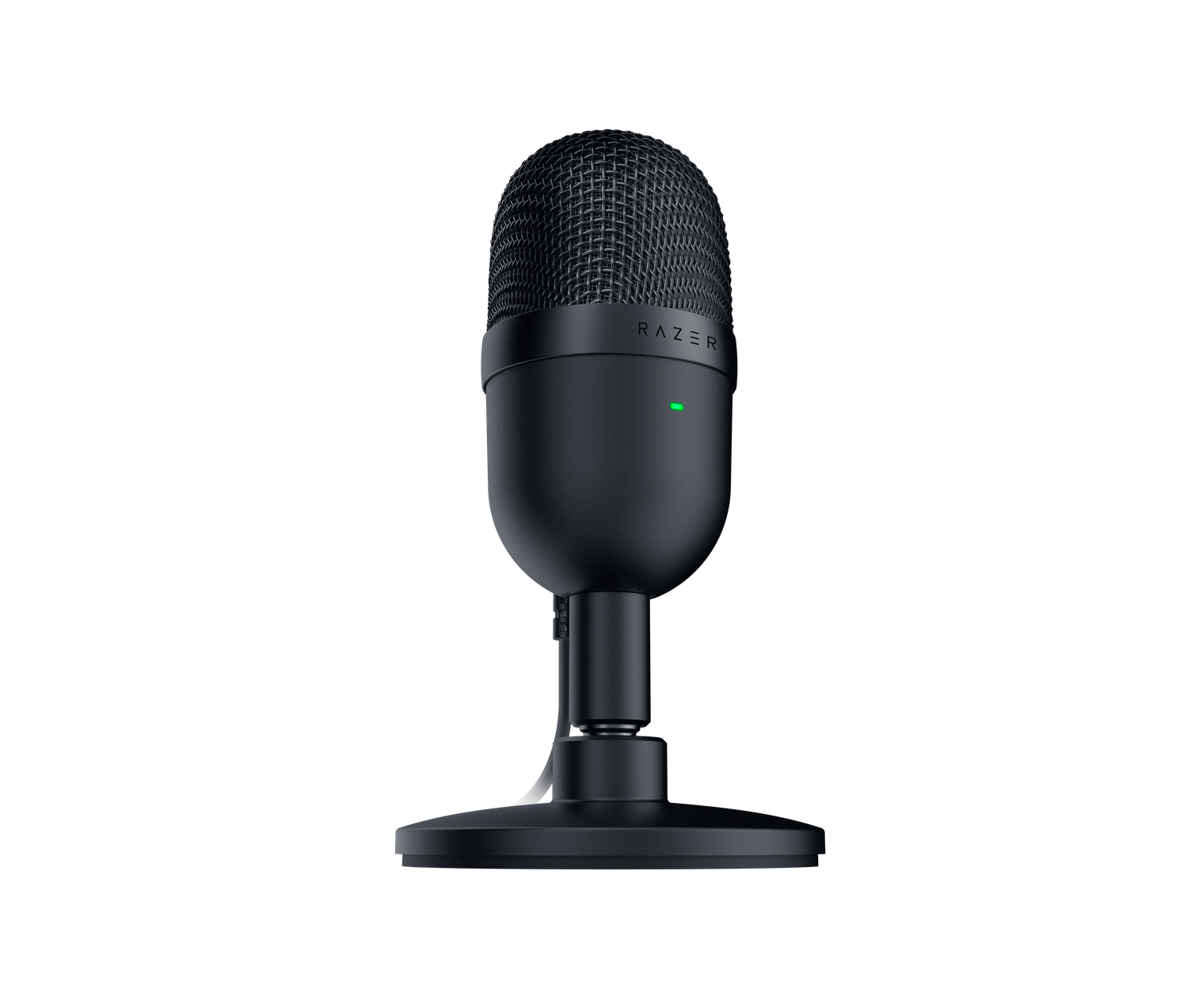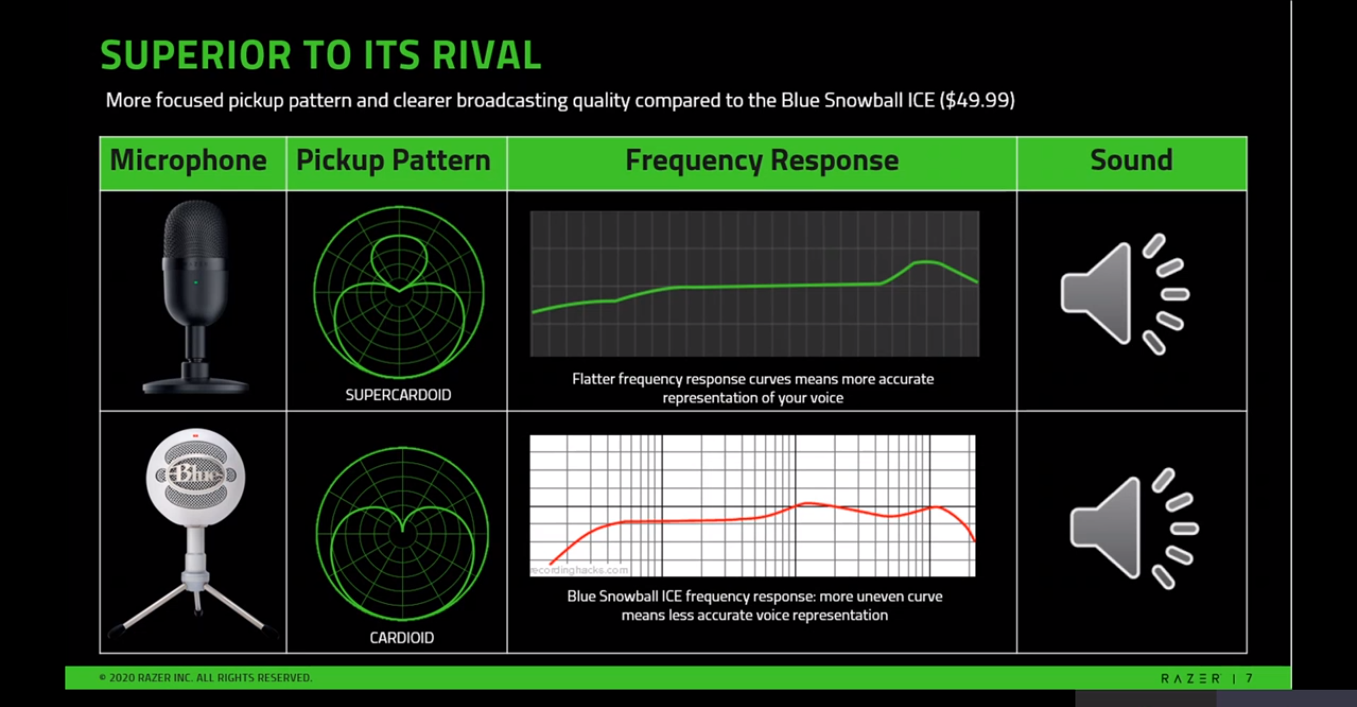Razer Seiren Mini Microphone Is Half a Pound, $50
Razer targets the Blue Snowball Ice and Blue Yeti Nano with its own small form factor USB microphone.
Today, Razer released the Seiren Mini, its first small form factor budget external microphone. Meant to compete with other similar external microphones like the $49 Blue Snowball Ice, this is a simple-to-operate 6.4 inch tall condenser microphone that’s meant to make the type of audio quality you’d find on the best gaming microphones more affordable for entry-level streamers and home office use.

The Razer Seiren Mini is plug-and-play out of the box with minimal controls. Differing from other mics in Razer’s Seiren lineup, like the Razer Seiren X, Razer Seiren Elite and Razer Seiren Emote, the Seiren Mini doesn’t take up much desk space. It comes in at just 6.4 x 3.5 inches and weighs 0.60 pounds. Meanwhile, the similarly small Blue Yeti Nano is 8.3 x 3.8 inches and weighs 1.39 pounds.

Razer equipped the Seiren Mini with a supercardoid pickup pattern, which means it focuses on recording sound coming from directly in front of it, and strives for a flat audio curve to keep voice representation accurate. The Blue Snowball Ice, meanwhile, has a cardoid pickup pattern, which lets more side noise in but is less susceptible to interference from behind the microphone. Razer claims the Snowball Ice also has a more uneven audio curve, though this is something we’d have to test ourselves before making any declarations on it.

In line with its simplistic nature, the Seiren Mini also lacks a tilting stand. Audiophiles may be thrown off by this, as well as with the microphone’s lack of knobs or buttons, but the Seiren Mini’s many color variants (the press materials show off black, white or pink options) make it clear that this is a casual microphone, as does the price.
The Seiren Mini is available now at Razer’s website and select retailers.
Get Tom's Hardware's best news and in-depth reviews, straight to your inbox.
Michelle Ehrhardt is an editor at Tom's Hardware. She's been following tech since her family got a Gateway running Windows 95, and is now on her third custom-built system. Her work has been published in publications like Paste, The Atlantic, and Kill Screen, just to name a few. She also holds a master's degree in game design from NYU.
